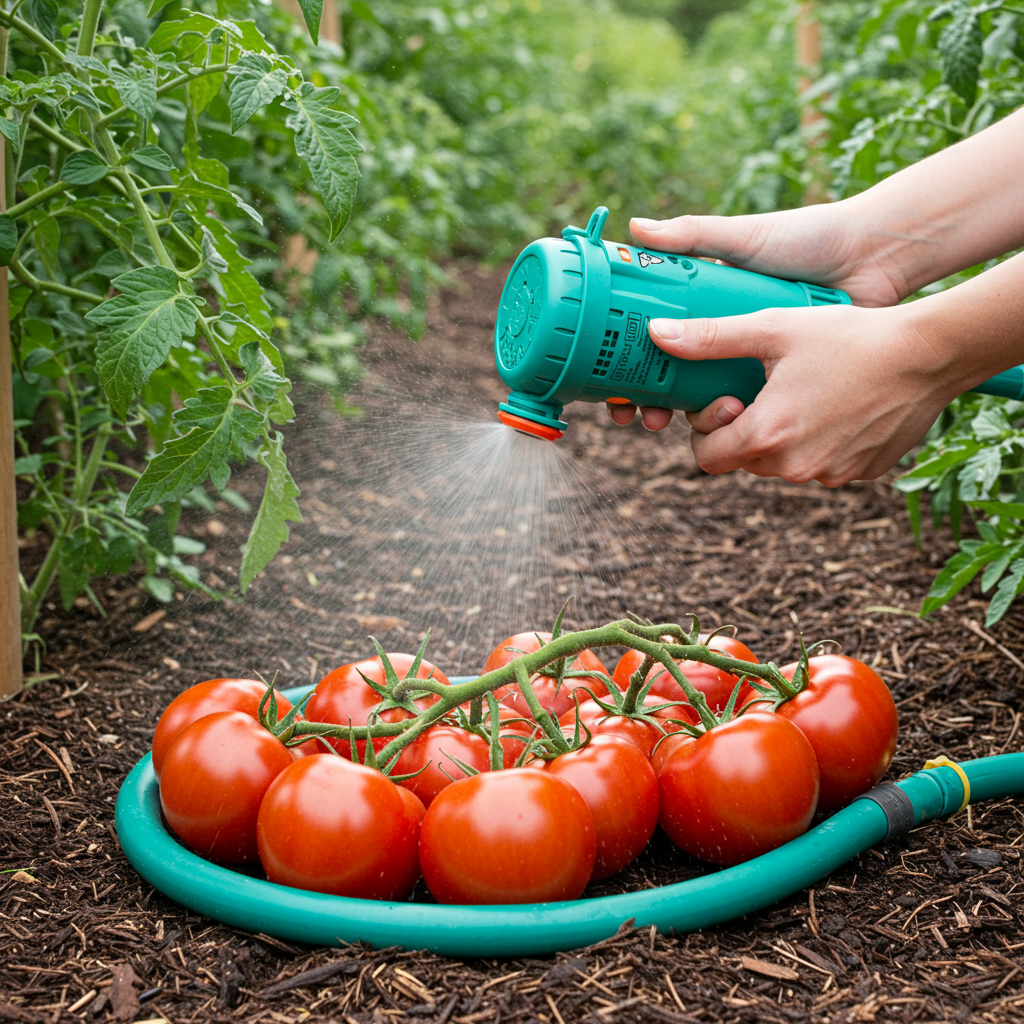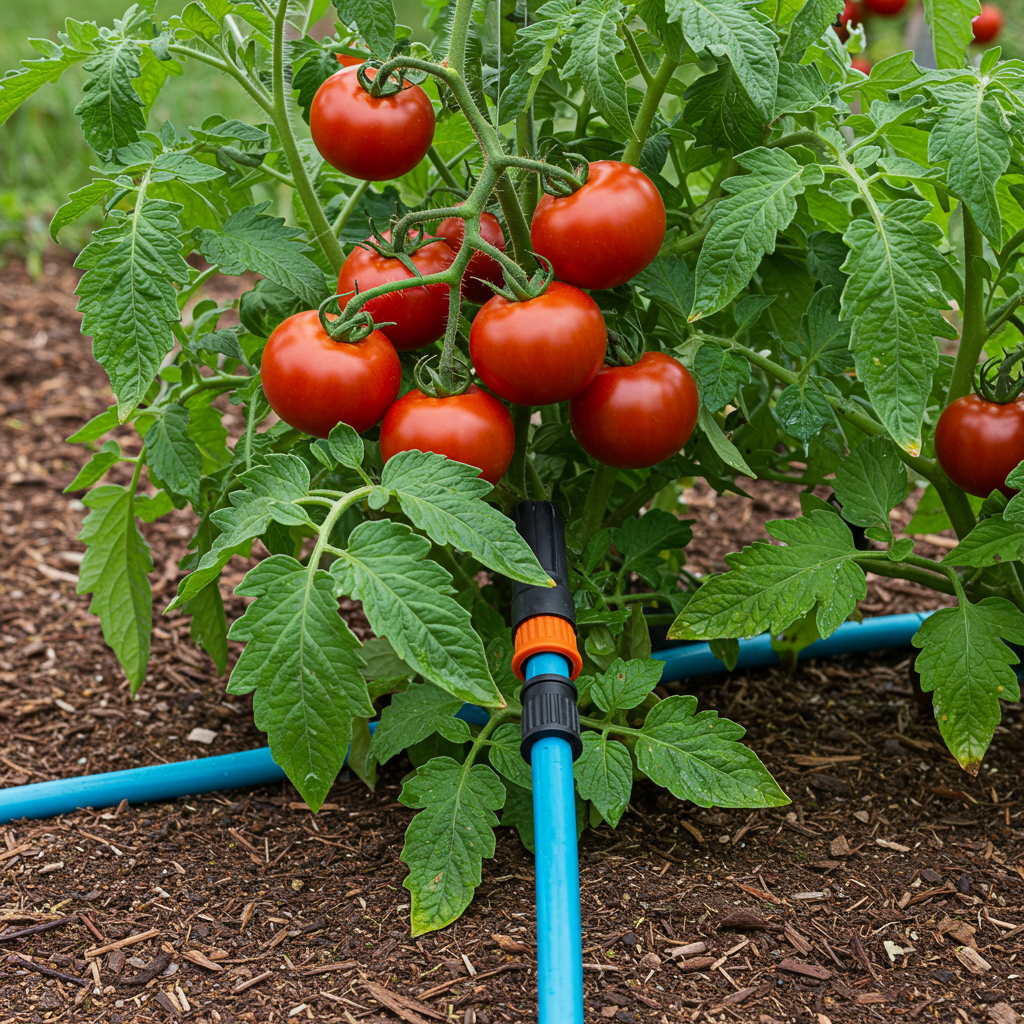This comprehensive guide explores the benefits and best practices of using soaker hoses for watering your tomato plants, ensuring a healthy and bountiful harvest.
Introduction: Watering Your Way to Tomato Success
Tomatoes are a garden favorite, but they require consistent watering for optimal growth and fruit production. Overwatering or underwatering can lead to various problems, including blossom-end rot, cracking, and stunted growth. A soaker hose offers a highly effective and efficient way to deliver water directly to the roots of your tomato plants, minimizing water waste and maximizing yield. This guide delves into everything you need to know about using soaker hoses for your tomato plants, from selecting the right hose to installation and maintenance.

Why Choose a Soaker Hose for Tomatoes?
Soaker hoses provide several advantages over traditional watering methods like overhead sprinklers or hand watering:
- Deep Watering: Soaker hoses deliver water directly to the root zone, encouraging deep root growth and making plants more drought-tolerant.
- Water Conservation: By minimizing evaporation and runoff, soaker hoses significantly reduce water waste compared to sprinklers.
- Disease Prevention: Keeping the foliage dry helps prevent fungal diseases that can thrive in moist conditions.
- Weed Control: Targeted watering minimizes weed growth by limiting water availability to unwanted plants.
- Time-Saving: Once installed, soaker hoses require minimal effort, freeing up your time for other gardening tasks.
Selecting the Right Soaker Hose
Several types of soaker hoses are available, each with its own features and benefits:
- Flat Soaker Hoses: These are the most common type, made of recycled rubber or vinyl. They are lightweight, easy to store, and relatively inexpensive.
- Round Soaker Hoses: These hoses are more durable and less prone to kinking than flat soaker hoses. They are typically made from heavier materials and can withstand higher water pressure.
- Soaker Hose Kits: These kits come with everything you need to get started, including the hose, connectors, and pressure regulator.
Consider the size of your garden and the water pressure in your system when selecting a soaker hose. For larger gardens, consider a soaker hose with multiple outlets or a system with a timer for automated watering.
Installing Your Soaker Hose System for Tomatoes
Installing a soaker hose is a straightforward process:
- Plan Your Layout: Determine the placement of your tomato plants and lay out the soaker hose accordingly. Ensure the hose reaches the base of each plant.
- Connect to Water Source: Attach the soaker hose to your outdoor faucet using a hose connector. A pressure regulator is highly recommended to prevent damage to the hose and ensure even watering.
- Secure the Hose: Use landscape staples or garden pins to secure the hose in place and prevent it from moving.
- Cover with Mulch: Covering the soaker hose with a layer of mulch helps retain moisture, suppress weeds, and protect the hose from sun damage. (Check out our guide on mulching best practices for more information).
- Test the System: Turn on the water and check for leaks or uneven watering. Adjust the water pressure and hose placement as needed.
Maintaining Your Soaker Hose
Proper maintenance will extend the life of your soaker hose:
- Drain the Hose: At the end of the growing season, drain the hose completely and store it in a dry, protected location.
- Flush the Hose: Periodically flush the hose with clean water to remove any sediment or debris that may clog the pores.
- Check for Leaks: Regularly inspect the hose for leaks and repair them promptly to avoid water waste. You might find our guide on fixing leaky garden hoses helpful.
- Winterize: In colder climates, disconnect and drain the soaker hose before winter to prevent freezing damage.
FAQs about Using Soaker Hoses for Tomatoes
- How often should I water my tomato plants with a soaker hose? Watering frequency depends on factors like climate, soil type, and plant size. Generally, watering deeply once or twice a week is sufficient. Monitor the soil moisture to determine the optimal watering schedule.
- Can I use a soaker hose with a timer? Yes, using a timer with your soaker hose allows for automated watering and can save you time and effort. Be sure to choose a timer compatible with your soaker hose system. Learn more about choosing the right garden timer.
- How long should I water my tomatoes with a soaker hose? Water until the soil is moist to a depth of about 6 inches. This usually takes about 30-60 minutes, depending on the water pressure and soil type.
- What is the best type of mulch to use with a soaker hose? Organic mulches like straw, wood chips, or shredded leaves work well with soaker hoses. They help retain moisture, regulate soil temperature, and suppress weeds.
Conclusion: Reap the Rewards of Healthy Tomatoes
Using a soaker hose for your tomato plants is an efficient and effective way to ensure they receive the consistent watering they need to thrive. By following the tips and guidelines outlined in this guide, you can enjoy a bountiful harvest of healthy, delicious tomatoes. From preventing diseases to conserving water, the benefits of using soaker hoses are numerous and will undoubtedly contribute to your gardening success. So, ditch the sprinkler and embrace the soaker hose – your tomato plants will thank you!

